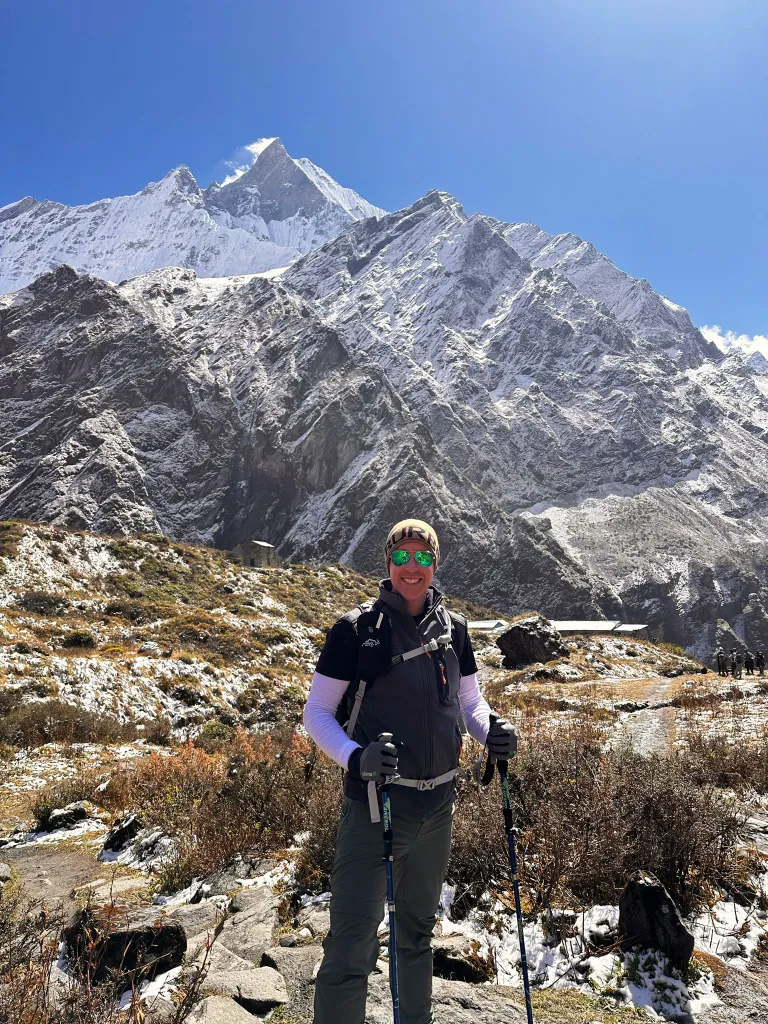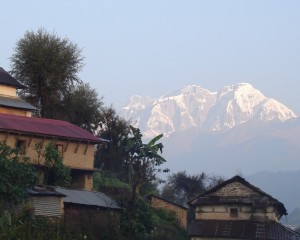Rapid Trek to Everest Base Camp: 8 Days Trek
Have you ever dreamt of reaching the legendary Everest Base Camp? Meanwhile, imagine embarking on this incredible journey and completing it in just 8 days.
However, it is no ordinary trek, itââ¬â¢s an adventure that requires good physical fitness.
The allure of the Himalayas, with its towering peaks and mystical allure, has allured adventurers for generations.
Among its peaks, none command the respect and admiration as much as the legendary Mount Everest.
Standing at the pinnacle of this adventure is the Everest Base Camp (EBC) trek ââ¬â an odyssey that captures the essence of the Himalayan spirit.
But whatââ¬â¢s so remarkable about Trek to Everest base camp?
A Complete Guide to Trek To Everest Base Camp: The Adventure Ahead
The trek to Everest base camp is a wonderful journey that will take you close to the worldââ¬â¢s highest peak.
In just eight days, you'll navigate through Sherpa villages, scale challenging altitudes, and stand at the base of the world's highest peak.
Letââ¬â¢s dive into the remarkable expedition that targets intrepid souls with a passion for adventure and a time constraint to match.
Overview of the Trek
The journey begins in Lukla and takes trekkers through the breathtaking landscapes of Sagarmatha National Park.
As trekkers pass through villages and dense forests, they gradually approach the Everest Base Camp, located at an elevation of around 5,364 meters.
Along the way, the trail winds through traditional Sherpa villages like Namche Bazaar, offering an authentic glimpse into Sherpa life and hospitality. The trek also leads to Tengboche Monastery, a spiritual hub where trekkers can witness Buddhist ceremonies amidst stunning mountain vistas.
This 8-day version of the EBC trek encapsulates the essence of the Himalayas, blending natural grandeur, cultural richness, and spiritual discovery into a remarkable and unforgettable journey.
Itinerary of the Trek To Everest Base Camp
Our professionals have drafted the itinerary for the rapid Everest base camp trek which makes your journey marvelous and wonderful.
Day 1: Fly to Lukla and Hike to Monjo (4 hours)
- You begin a scenic flight from Kathmandu to Lukla, landing at Tenzing-Hillary Airport, known for its short runway.
- After landing in Lukla, embark on a trek to Monjo and pass through lush forests and picturesque landscapes.
- Monjo is a small village situated in the Dudh Koshi River valley and serves as the entry point to the Sagarmatha National Park.
Day 2: Hike from Monjo to Namche Bazaar (5 hours)
- Follow the trail along the Dudh Koshi River and cross several suspension bridges.
- Ascend through a mix of pine forests and open terrains, gradually reaching the vibrant Namche Bazaar.
- Namche Bazaar is a bustling Sherpa town and the main trading hub of the Khumbu region.
Day 3: Trek from Namche Bazaar to Pangboche (6 hours)
- Trek further into the Himalayas, passing through villages like Tengboche with its famous monastery.
- The trail offers stunning views of Everest, Lhotse, and Ama Dablam peaks as you make your way to Pangboche.
- Pangboche is a charming village known for its ancient monastery and Sherpa culture.
Day 4: Trek from Pangboche to Tukla (5 hours)
- Continue your journey through alpine landscapes and cross the Imja Khola.
- As you climb higher, you'll reach Tukla, a small settlement located at the foot of the Khumbu Glacier.
Day 5: Trek to Gorak Shep (5 hours), then to Everest Base Camp (3 hours)
- Trek to Gorak Shep, the last settlement before Everest Base Camp, passing through rocky terrain.
- After a short rest, continue the hike to Everest Base Camp, where climbers prepare for their ascent of Everest.
- Marvel at the breathtaking scenery and the majestic Khumbu Icefall.
Day 6: Summit Kala Patthar (2 hours 30 minutes) and Trek to Pheriche (5 hours 30 minutes)
- Early morning ascent to Kala Patthar, a vantage point offering panoramic views of Everest, Nuptse, and other peaks.
- Descend to Gorak Shep and continue trekking to Pheriche, descending to lower altitudes.
Day 7: Trek from Pheriche to Namche Bazaar (6 hours)
- Retrace your steps through Pangboche and Tengboche, descending back to Namche Bazaar.
- Enjoy the familiar landscapes from a different perspective as you make your way down.
Day 8: Trek from Namche Bazaar to Lukla (6 hours)
- Embark on the final leg of your trek and pass through forests by familiar villages.
- Reach Lukla, where you can reflect on your incredible journey and celebrate your accomplishment.
Highlights of the Everest base camp
Panoramic Himalayan Views
The trek rewards trekkers with breathtaking vistas of Himalayan peaks like Everest, Lhotse, Nuptse, and Pumori. These majestic giants form an awe-inspiring backdrop, creating an indelible memory.
Kalapatthar Summit
Climbing to Kalapatthar's summit at 5,545 meters is a must for sunrise or sunset. The sweeping 360-degree view offers an intimate encounter with Everest, along with neighboring peaks and the Khumbu Glacier.
Cultural Immersion
The trek winds through Sherpa villages, providing an opportunity to connect with local culture. Visiting monasteries and witnessing traditional rituals offers a glimpse into the spiritual and communal life of the Sherpa people.
Tengboche Monastery
Tengboche Monastery, a spiritual haven, is surrounded by stunning mountain vistas. Its significance lies in its ancient heritage, hosting daily Buddhist rituals and festivals like Mani Rimdu.
Khumbu Glacier & Icefalls
Observing the Khumbu Glacier's enormity and navigating through icefalls is an extraordinary experience. The glacial landscape is a testament to nature's grandeur and power.
Gokyo Lakes & Gokyo RI
An optional route, Gokyo Lakes, boasts pristine freshwater lakes reflecting the Himalayan peaks. Climbing Gokyo RI unveils breathtaking panoramas and the world's longest glacier, Ngozumpa.
Namche Bazaar
Serving as the heart of the Khumbu region, Namche Bazaar's bustling markets, lodges, and facilities offer a cultural and logistical hub for trekkers.
Sagarmatha National Park
This UNESCO World Heritage Site preserves the region's unique biodiversity and Sherpa culture. The park's forests, alpine meadows, and rugged terrain contribute to the trek's charm.
Altitude Achievement
Trekking to such altitudes is a personal triumph, offering a sense of accomplishment and a connection with nature's grand design.
Trek Difficulty and Preparation
The Everest View trek offers a balanced challenge with moderate grading, demanding good physical fitness and mental resilience due to high altitudes and diverse conditions.
Trekkers need to be prepared for 6 to 7 hours of daily walking on uneven terrain, requiring cardiovascular endurance and leg strength.
Acclimatization to altitude is crucial, necessitating gradual ascents and acclimatization days. Adequate preparation involves cardiovascular exercises, mental readiness, and a positive mindset.
The beginners are welcome with proper training and mindset with provide support. Proper gear, hydration, nutrition, health considerations, and travel insurance are essential for a safe and enjoyable experience amidst the Himalayan wonders.
Best Time to Visit the Trek
Spring (February-March)
The season is characterized by vibrant wildflowers in bloom, adding a colorful charm to the landscape. The weather is relatively stable, with clear skies and warmer temperatures it is a popular time for trekkers.

It's an excellent opportunity to avoid the monsoon season while enjoying pleasant trekking conditions.
Autumn (September-November)
It is known as the peak trekking season, autumn offers crystal-clear mountain views and comfortable weather. The skies are generally unobstructed, providing exceptional vistas of the Himalayan peaks.
The cool, dry air and vibrant landscapes make this season a favorite among trekkers, photographers, and nature enthusiasts.
Winter (December-January)
Winter treks present a unique experience, with fewer crowds and crisp, pristine air. While the temperatures are colder, especially at higher altitudes, the skies are often clear, offering striking views of the snow-clad peaks.
Trekkers should be prepared for colder conditions and potential snowfall, but the serene beauty of the region in winter is truly captivating.
Summer (June-August)
Monsoon rains can make this season challenging due to slippery trails and reduced visibility, some trekkers do choose to venture during the summer. The landscapes are lush and green, and the trails are less crowded.
Trekkers should also prepare for wet conditions. But those willing to embrace the rain can enjoy a quieter and more tranquil journey.
Weather and Flight Considerations
Weather-related Delays
Flights between Kathmandu and Lukla can be affected by challenging mountain weather conditions. Such as fog, low clouds, and adverse weather, potentially lead to delays or cancellations.
Flight Flexibility
You incorporate extra days into your trek itinerary to accommodate potential flight delays. These buffer days enhance flexibility, alleviate stress from unforeseen disruptions, and aid in acclimatization for a safer and more enjoyable trek.
Alternative Arrangements
We assure support for arranging alternative travel options, such as charter helicopters, ensuring a smoother experience during flight delays.
Communication
Stay connected with your trekking agency and guides, particularly during periods of possible flight disruptions. They'll keep you updated on flight status and assist in adjusting your itinerary as needed.
Patience and Preparation
Given the uncontrollable nature of weather, approach flight delays with patience and understanding. Maintaining a positive mindset and being ready for potential changes to your trek schedule will enhance your overall experience.
Travel Insurance
You should ensure you have comprehensive travel insurance that covers flight delays and associated expenses. The insurance provides financial protection and peace of mind in case unexpected disruptions arise.
To wrap up, the trek to Everest Base Camp offers a remarkable blend of natural beauty, cultural immersion, and personal accomplishment. Nepal Vision Treks will provide you with the best experience and make your trekking efficient.
FAQS
- How hard is it to walk to Everest Base Camp?
Walking to Everest Base Camp is moderately challenging, requiring good physical fitness, mental endurance, and proper acclimatization due to high altitudes.
- How long is a hike to Everest Base Camp?
The hike to Everest Base Camp typically takes about 12-14 days, covering around 130 kilometers (81 miles) round trip, depending on the chosen route and acclimatization schedule.
- Can a beginner trek Everest Base Camp?
Yes, a determined beginner can trek to Everest Base Camp with proper training, acclimatization, and support from experienced guides and trekking agencies.
- What is the age limit for Everest Base Camp?
There is no strict age limit for the Everest Base Camp trek, but trekkers should be physically fit and mentally prepared for the challenges of high-altitude trekking.
- What fitness level is Everest Base Camp Trek?
The Everest Base Camp Trek requires a good level of physical fitness with a focus on cardiovascular endurance and leg strength due to long daily walking durations and high altitudes.
- Can you sleep at Everest Base Camp?
No, trekkers generally don't sleep at Everest Base Camp itself due to its altitude; they stay at the nearby village of Gorak Shep and then return to lower altitudes for sleeping during the trek.
- Is a passport required for Everest Base Camp?
Yes, a valid passport is required for the Everest Base Camp trek, especially for obtaining necessary permits and identification during the journey.
- Can you drink alcohol on the Everest Base Camp trek?
While alcohol is available at some lodges along the Everest Base Camp trek, it's generally advised to avoid excessive consumption due to its potential to exacerbate altitude-related issues and impact overall trekking performance.
- Do you need oxygen for Everest Base Camp?
Oxygen supplementation is not typically required for the Everest Base Camp trek, but it's advisable to acclimatize properly and be aware of altitude-related symptoms.
Similar Resources:
Everest Base Camp Trek - 11 Days
Everest Base Camp Trek via Gokyo Valley
Everest Base Camp Trek and Helicopter Ride






